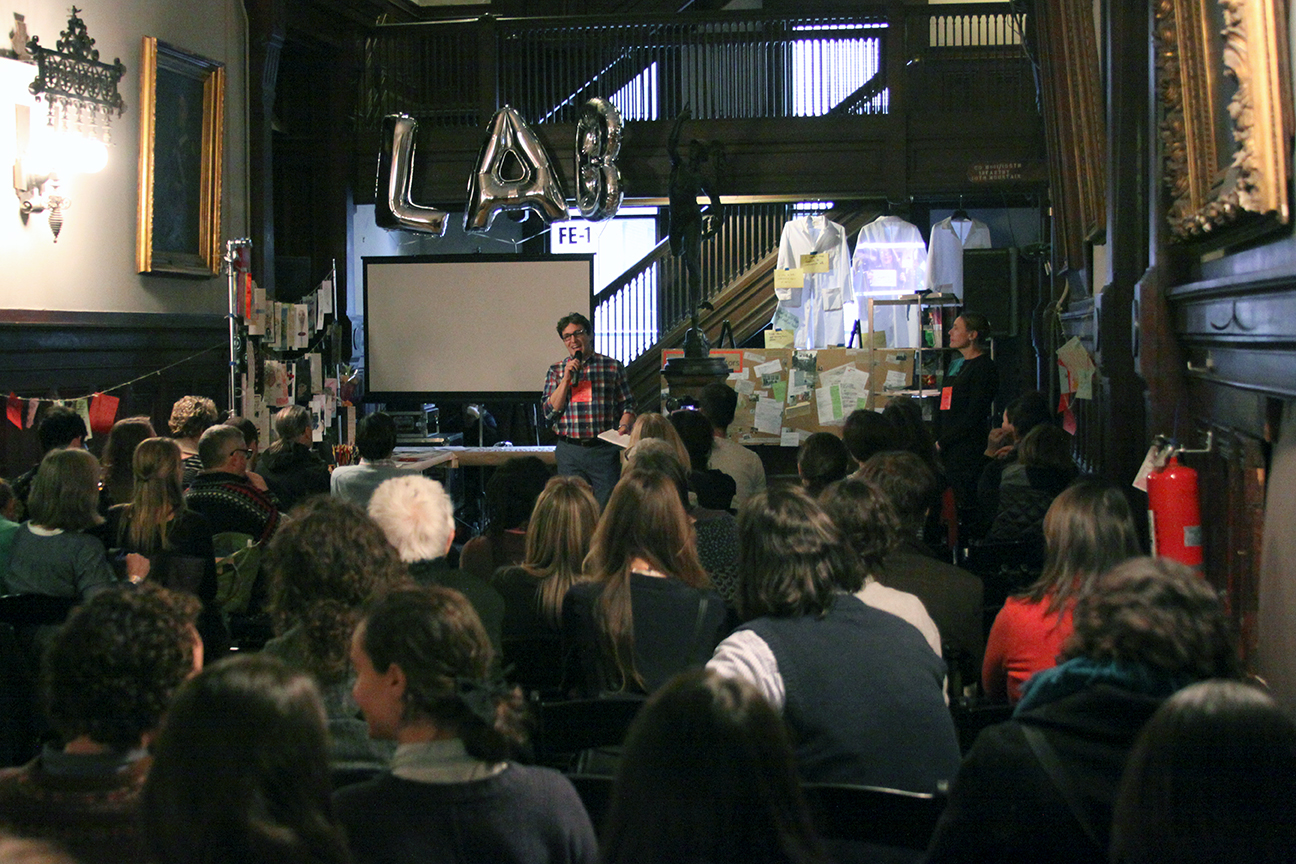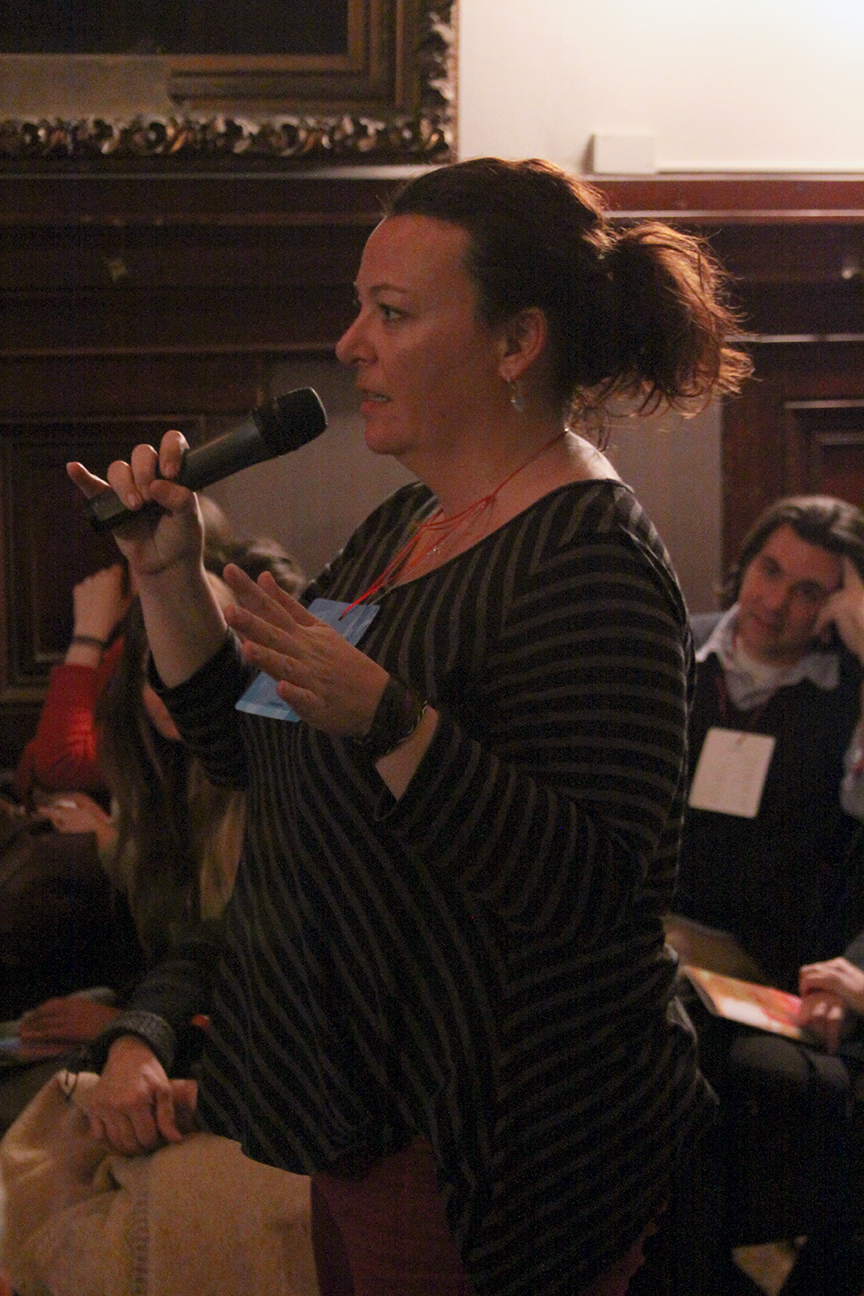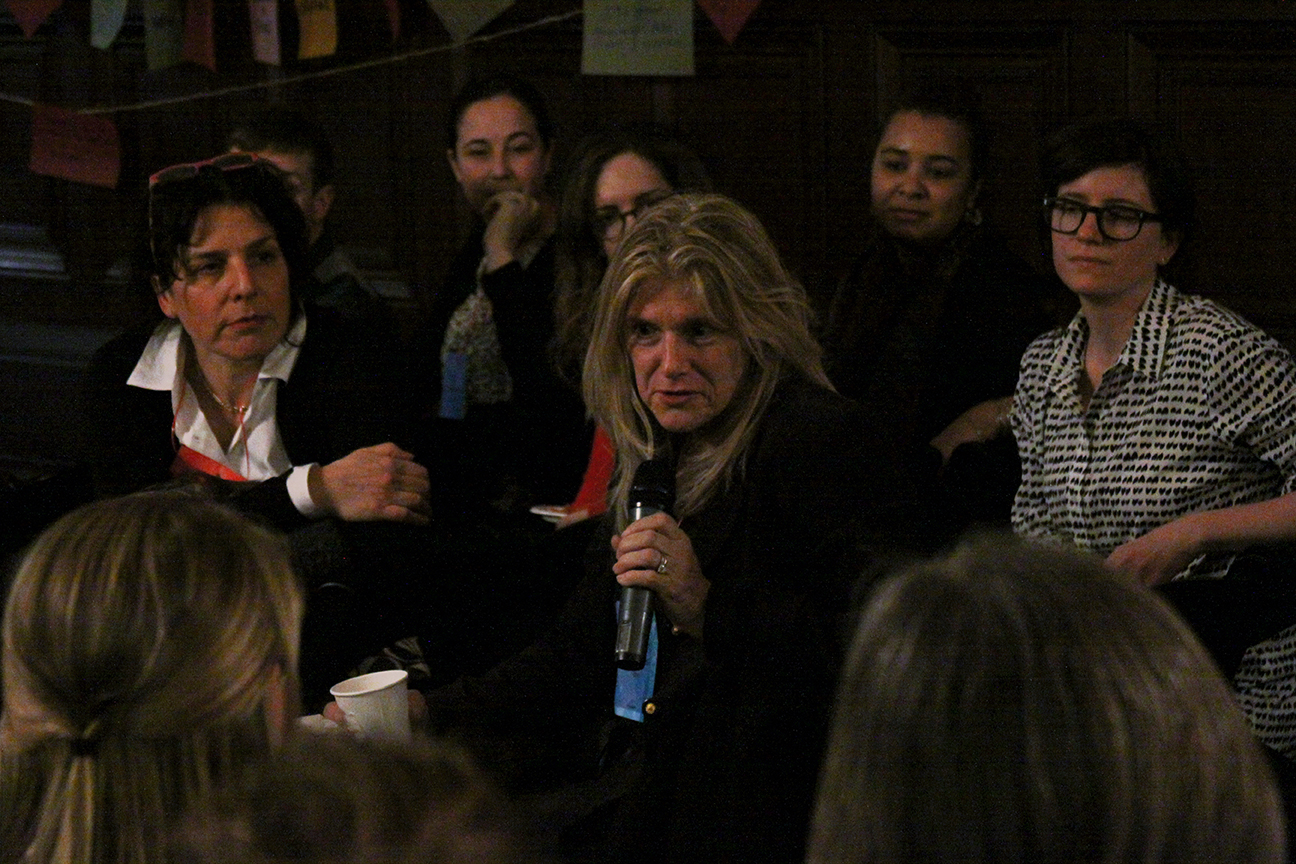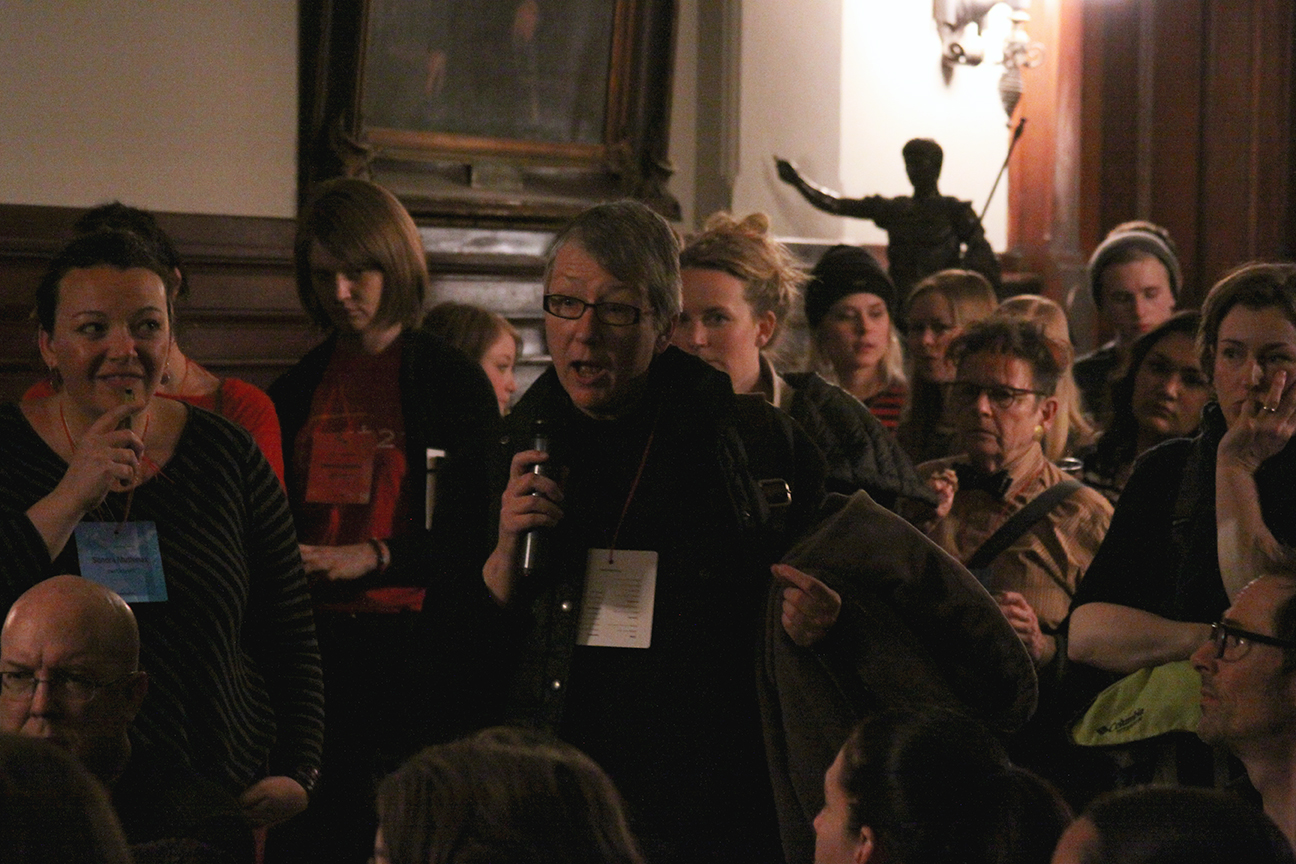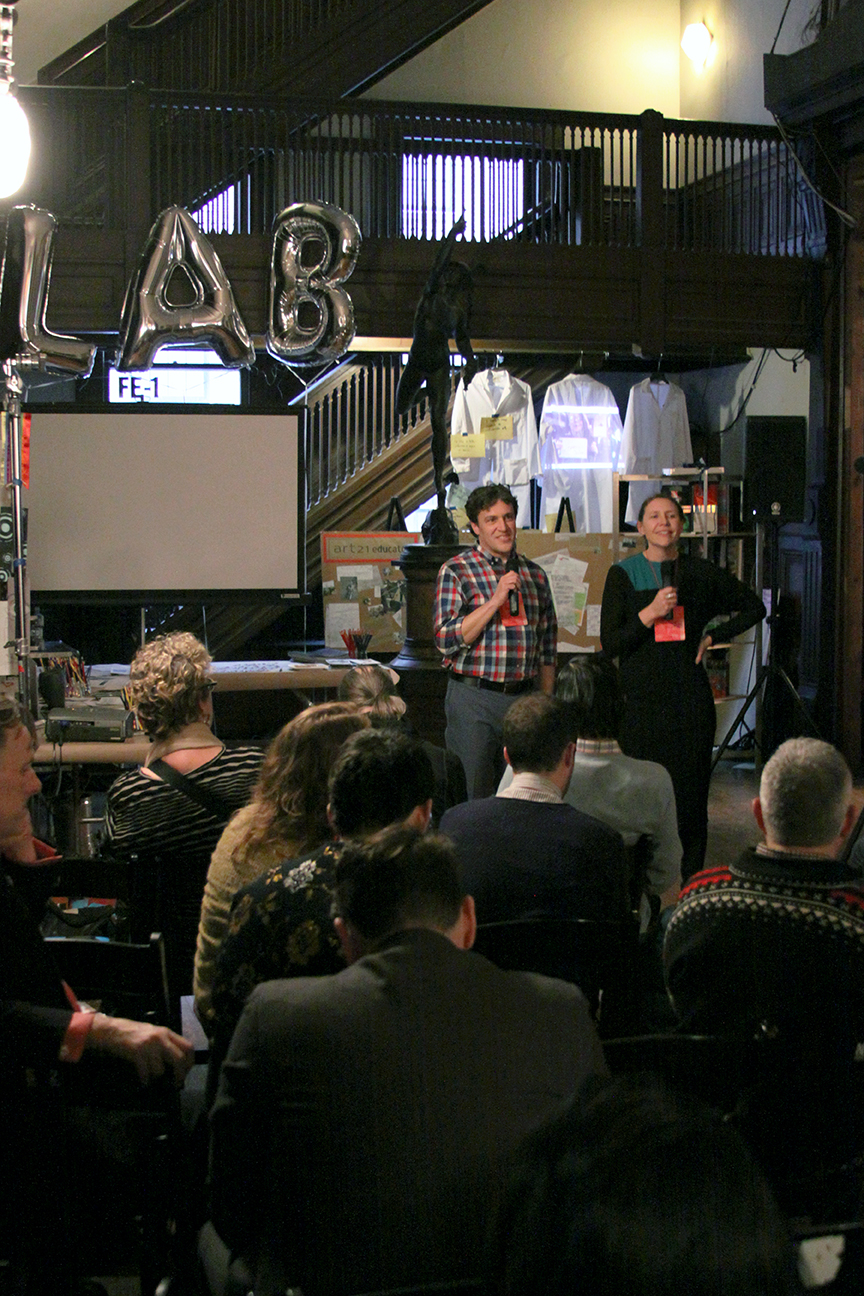Summary
Is the push for integrating art and education ever over?
Generating Creative Chemistries
by Creative Chemistries organizers Jessica Hamlin and Joe Fusaro
Creative Chemistries: Radical Practices for Art + Education was not a conference, symposium, or lecture. Defying common meeting formats, Creative Chemistries served as a platform for exchange and an experiment in building more equitable and productive relationships between artists, teachers, policy makers, museum educators, and students. Premised on the creative potential of connecting people across institutional and disciplinary perspectives, our goal was to bridge fields of practice and generate alliances between practitioners who rarely sit across from each other at the same table. How might the creative exchange between an artist and a classroom teacher, a principal and a policy maker inspire visionary educational practices, reframe the work of the artist, and further the promise of both fields?
Over the course of two days, 175 classroom teachers, museum educators, artists, community-based artist/educators, policy makers, school administrators, and students from fifteen states came together at the Park Avenue Armory in New York City. Creative Chemistries experimented with conversational formats and opportunities for hands-on experiences that allowed participants to discuss, debate, and play with new ideas and practices. Our four themes, 21st Century Citizens, The Intersections of Artistic and Educational Practices, Classroom as Community and Community as Classroom, and Towards Equity, Access and Social Justice, served as points of entry and a means of cultivating generative chemistries among diverse stakeholders.
To begin, Creative Chemistries presented a collection of ART21 film excerpts that introduced participating artists and reflected a range of perspectives on artistic methods, the functions of art, ways that artists have adapted pedagogical strategies, and how artists consider their audiences and the impact of their work. Following the films, three panelists – Sandra Jackson-Dumont from the Metropolitan Museum of Art, ART21 Educator and Baltimore teacher Rebecca Belleville, and artist Luis Camnitzer – shared personal narratives from their early years as students and their current practices as cultural workers.
Suggesting a new paradigm for the work of art education, Sandra Jackson-Dumont opened the conversation: “I think working at the intersection of art and education is a social justice act. I think it’s an equity issue because it’s about the freedom to think critically about the world you live in, but also to have the tools that allow you to navigate the world for yourself.” Rebecca Belleville added, “The reason I’m still committed to art education, and why I’m still committed specifically to urban art education is the need for critical thinking.” Later in the conversation Luis pushed further, “A good education would fight existing structures to challenge the canon… A good education program or a museum should ask how can we create as many heretics as possible so that the canon can be shifted, can be adapted, and be owned by the people who should own it.”
Premised on these critical aspirations for art and education, Creative Chemistries built from these foundations to explore additional issues that define the field today:
- the role of the educator and artist in the face of privilege, power, and social injustice;
- process-driven teaching, learning and un-learning that inspires critical thinkers and creative problem-solvers;
- new opportunities to consider place-based learning and civic engagement in and beyond the walls of classrooms and school buildings;
- and, defining, sustaining, and activating effective communities of practice.
Saturday began with a two sets of dialogues between artists and art education professionals. In the first exchange, Mark Bradford and the Executive Director at the Center for Arts Education, Eric Pryor, discussed ways and means of bringing art and art education to communities that need it most. Photographer LaToya Ruby Frazier and John Abodeely, Deputy Director of the President’s Committee on the Arts and Humanities spoke in the second exchange, where they surveyed the issues plaguing traditional arts institutions and educational systems.
Two rounds of open-form dialogues followed; four rooms were each dedicated to one of the four Creative Chemistries themes, and a moderator framed the discussion for four panelists to share insight, before discussing the issues in smaller groups with the participants around them. Next came five different experiments – artistic projects for all Creative Chemistries attendees to actively participate in, that were designed by an artist and art educator working in tandem.
Rather than a means to a specific end, Creative Chemistries served as a starting point for continued exchange – the kind of exchange that can generate new norms for contemporary art education and continued engagement with these issues and new ones as they arise.
Through future Creative Chemistries gatherings, discussion on social media platforms, and extended conversations with colleagues and communities, we hope to affect education policy and broader public understanding of the work of artists, and involve an ever-growing community of stakeholders in the enactment of radical practices in education.
Closing Remarks
Creative Chemistries ended with a town hall-style discussion of what participants found most valuable at the event, and where artists, educators and policy makers can take these ideas and inspirations moving forward. All of the 175 attendees were given a chance to speak their mind, as students, teachers and artists alike prepared themselves to re-enter the world with a new art educational tool belt.
Final Reflections
by Jeannine Bardo, Visual Art Teacher at St. Ephrem’s School, Brooklyn, NY
What happened? For two days art educators, artists, museum educators, administrators and policy makers from across the country came together to discuss the role of contemporary art, art education and what it means to synthesize both in an entirely new way – a way that shifts the paradigm for art education and also challenges the artist to consider the role of art education as a place to participate in confronting the status quo of the classroom culture, and inspiring a new dialogue within the artist’s realm and the institutions of both art and education. This challenge and how it was put forth in the context of Creative Chemistries is where the sparks started flying. I was there to bear witness to the magic.
I have been a part of the ART21 Educators program since year three and the program and the people have entirely changed my teaching practice. I have the knowledge, understanding and support of a community of stellar educators that is fueled by the innovative, passionate and daring ART21 facilitators who have a knack for bringing people together and nurturing their gifts. I am continually amazed at how far the program has taken the idea of art education and turned it upside down in ways not unlike the artist’s practice.
We love artists, but why? My thoughts run to the fact that they can make the impossible happen. They are the ones who can immerse themselves in the world and find a way to respond to the places in the mind that can’t quite connect everything. Artists find a way to make those connections and sometimes we are gifted with deeper understandings or find beauty and/or truth in the confusion because of our experience with art. They are often fearless in their expression and even though art making is a somewhat selfish act it ends up belonging to all of us and it becomes ours to decipher.
For some art educators, ART21 has been a tool to bring the thoughtfulness, excitement, and challenge of art into their classrooms. Used correctly they inspire new lessons, open up dialogue, expose new ideas and give their students a generous view of the artist’s practice. The ART21 films in and of themselves are a precious addition to my teaching practice, but the deep, rich support given by the ART21 community nurtures continuing inspiration and innovation in the field of art education.
All of this has certainly made me happier as a teacher, and going into Creative Chemistries I was hoping for more of the same. I expected intelligent conversation, innovation and networking to happen, but it ended up being so much more. It left us with a challenge. The majority of the participants were aware of the magic that was occurring and that they were witnessing something just a little more special, something that could end up seeding seismic change in education.
What follows? THAT is the challenge. The want is there. The need is there. The challenge is there. And like good art, we are left with more questions and inspiration. I do believe that the magic created was chemistry and good chemistry is a mixture of experience, knowledge, accidents and luck, which can only become something new if the ‘chemists’ have the vision and fortitude to believe in it. The passionate and daring ART21 facilitators possess all of these traits. I will end this with my own unscientific, but intuitive opinion… the elements are in place and the stars are aligning. All we need is the collaborative human element to take it from the seed and give it roots.



